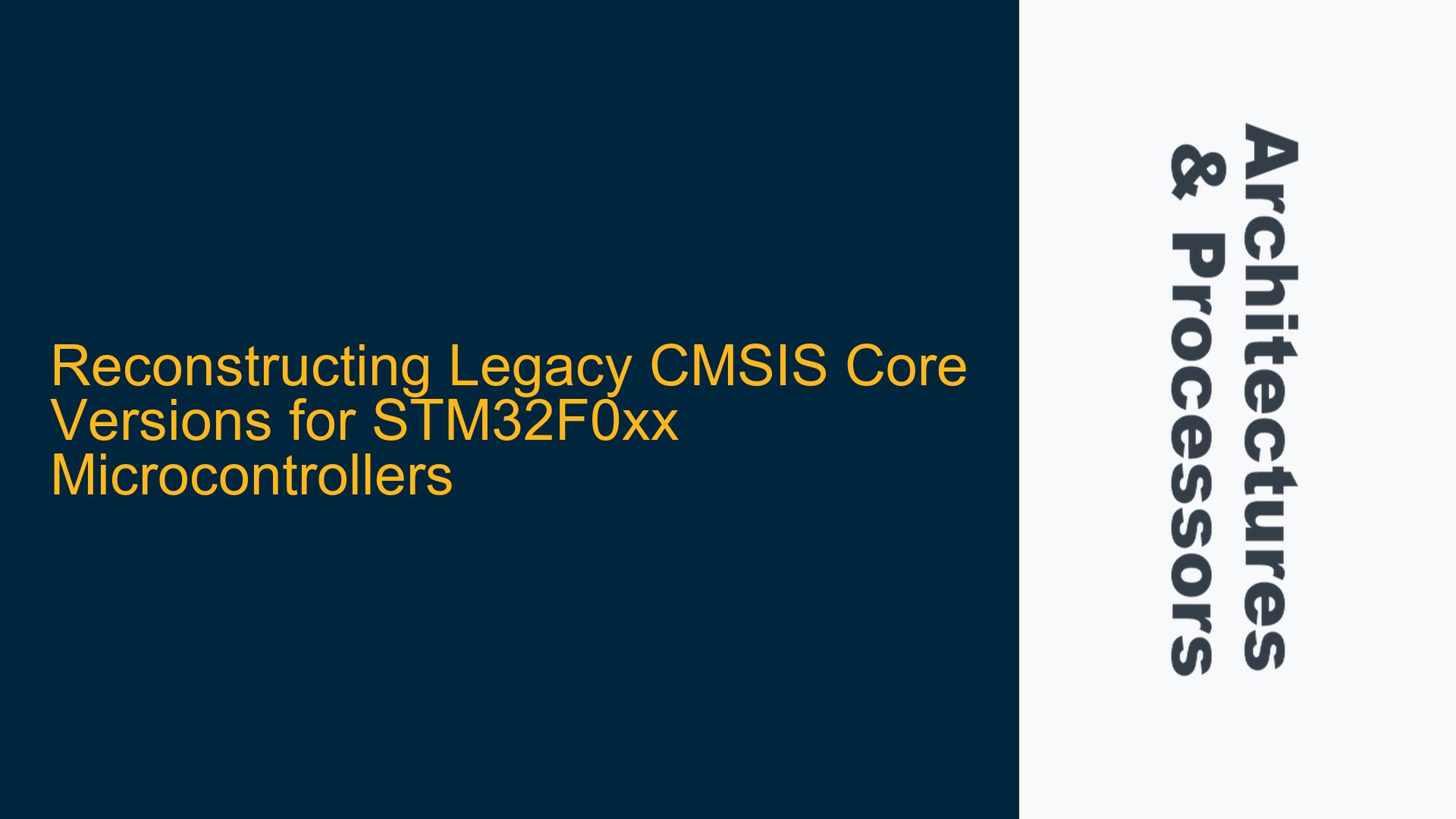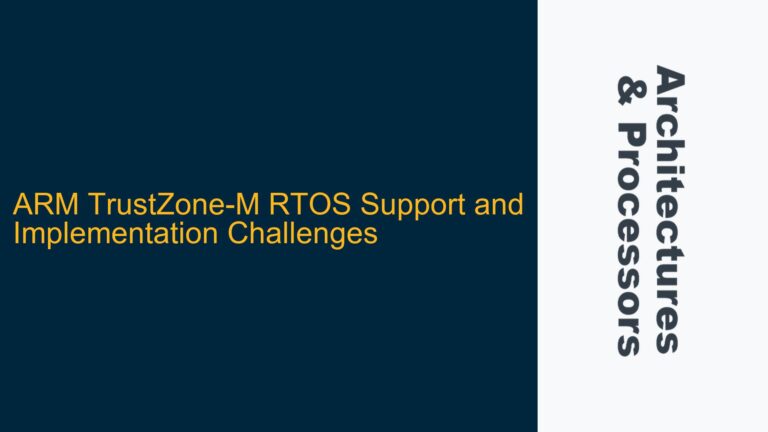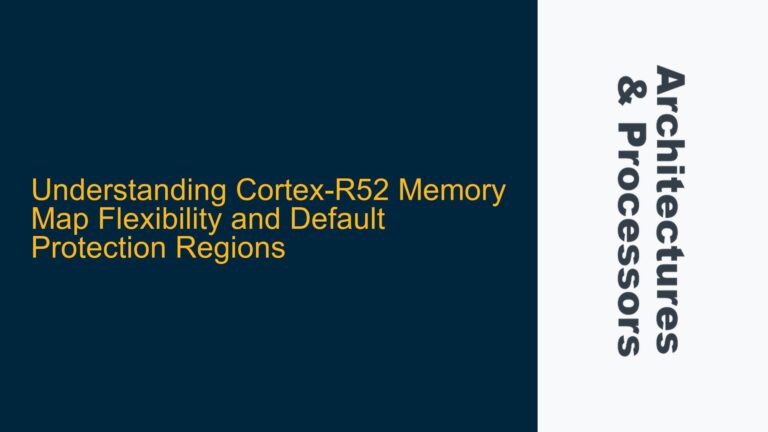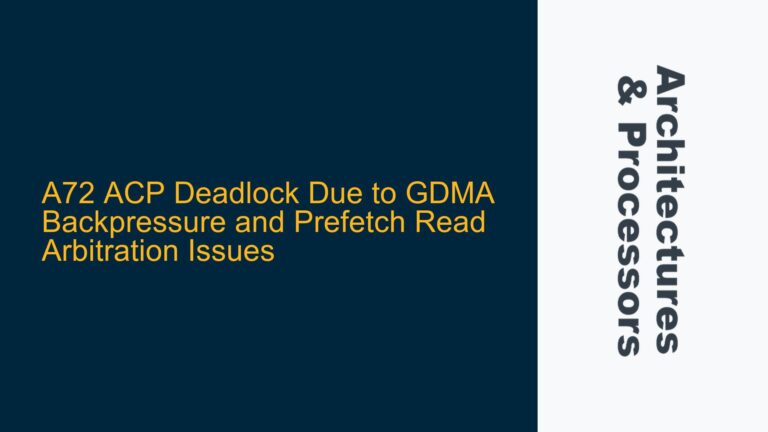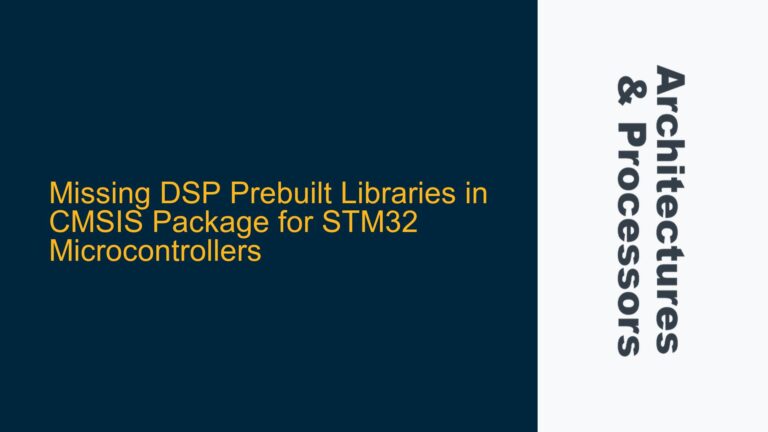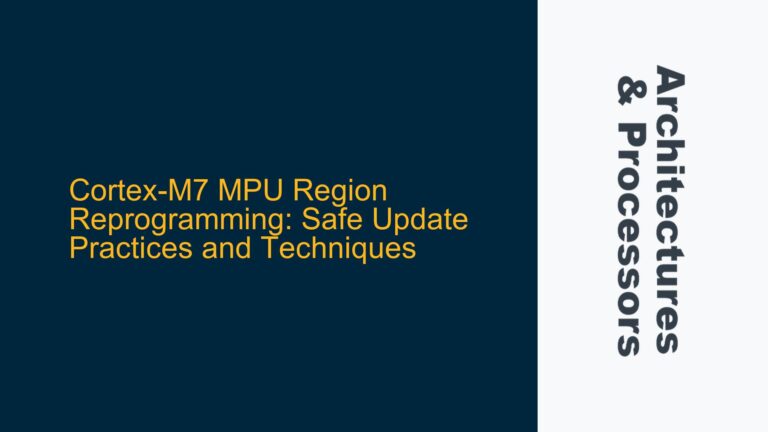Legacy CMSIS Core Version Mismatch in STM32F0xx Projects
When working with legacy embedded systems, particularly those based on ARM Cortex-M microcontrollers like the STM32F0xx series, one of the most common challenges is dealing with outdated or mismatched versions of the CMSIS (Cortex Microcontroller Software Interface Standard) Core. The CMSIS Core provides a standardized hardware abstraction layer for Cortex-M processors, enabling consistent access to peripherals, interrupts, and system features. However, when reengineering or maintaining older projects, developers often encounter situations where the original CMSIS Core version used in the project is no longer readily available or has been replaced by newer versions. This mismatch can lead to subtle bugs, performance issues, or even compilation failures, especially when the legacy code relies on deprecated features or specific behaviors of older CMSIS versions.
In the case of the STM32F0xx series, the problem is compounded by the fact that the CMSIS Core is often bundled with vendor-specific peripheral libraries, such as the STM32 Standard Peripheral Library (SPL) or the newer STM32Cube HAL. These libraries are tightly coupled with specific versions of the CMSIS Core, and using an incorrect version can result in undefined behavior or hardware misconfigurations. For example, the STM32F030F4P6 microcontroller mentioned in the discussion relies on a specific version of the CMSIS Core (V1.0.1) that dates back to April 2012. This version includes definitions and memory mappings that are critical for accessing the microcontroller’s peripherals, and any deviation from this version can cause the code to fail.
The challenge is further exacerbated by the fact that the original CMSIS Core version may have been modified or "optimized" by previous developers, making it difficult to determine whether the observed issues are due to version mismatches, custom modifications, or both. Additionally, the lack of comprehensive documentation for older CMSIS versions makes it difficult to identify the exact changes introduced in newer versions, further complicating the debugging process.
Identifying and Locating Legacy CMSIS Core Versions
The first step in resolving CMSIS Core version mismatches is to identify the exact version used in the original project. This can be done by examining the project’s source code, particularly the header files that include CMSIS Core definitions. In the case of the STM32F0xx series, the primary header file is typically named stm32f0xx.h, and it contains metadata such as the version number, release date, and author information. For example, the header file mentioned in the discussion includes the following metadata:
* @file stm32f0xx.h
* @author MCD Application Team
* @version V1.0.1
* @date 20-April-2012
* @brief CMSIS Cortex-M0 Device Peripheral Access Layer Header File.
* This file contains all the peripheral register's definitions, bits
* definitions and memory mapping for STM32F0xx devices.
This metadata indicates that the project uses CMSIS Core version V1.0.1, released on April 20, 2012, and authored by the MCD Application Team (a division of STMicroelectronics). Once the exact version has been identified, the next step is to locate a copy of the original CMSIS Core files. This can be challenging, as older versions are often removed from official repositories or replaced by newer releases. However, there are several strategies for locating legacy CMSIS Core versions:
-
Vendor-Specific Firmware Packages: Many microcontroller vendors, including STMicroelectronics, provide firmware packages that bundle the CMSIS Core with vendor-specific peripheral libraries. These packages are often versioned and archived, making it possible to locate older releases. For example, the STM32CubeF0 firmware package mentioned in the discussion dates back to June 2014, but earlier versions may be available through STMicroelectronics’ website or support channels.
-
Version Control Systems: Open-source projects and community repositories often use version control systems like Git to manage code changes. Searching platforms like GitHub for specific file names (e.g.,
stm32f0xx.h) or version numbers can yield results, as developers may have archived older versions of the CMSIS Core for compatibility purposes. -
Community Forums and Archives: ARM and microcontroller vendor forums often contain discussions and resources related to legacy software. Searching these forums for specific version numbers or file names can help locate archived copies of the CMSIS Core.
-
Direct Contact with Vendors: In some cases, the only way to obtain a legacy CMSIS Core version is to contact the microcontroller vendor directly. Vendors like STMicroelectronics may be able to provide access to older firmware packages or documentation upon request.
Once the correct CMSIS Core version has been located, it is essential to verify its integrity and compatibility with the project. This can be done by comparing the header files and source code with the original project files, ensuring that all definitions, memory mappings, and peripheral access functions match.
Migrating and Adapting Legacy Code to Newer CMSIS Core Versions
In some cases, it may not be feasible to obtain the exact legacy CMSIS Core version used in the original project. This can occur if the version is no longer available, or if the project needs to be updated to support newer hardware or software features. In such scenarios, the legacy code must be migrated and adapted to work with a newer CMSIS Core version. This process involves several steps:
-
Code Analysis and Comparison: The first step is to perform a detailed analysis of the legacy code, identifying all dependencies on the CMSIS Core. This includes examining header files, peripheral access functions, interrupt handlers, and system initialization routines. The goal is to create a comprehensive map of the code’s interactions with the CMSIS Core, highlighting any areas that may be affected by version changes.
-
Version-Specific Changes: Once the dependencies have been identified, the next step is to compare the legacy CMSIS Core version with the newer version, noting any changes in definitions, memory mappings, or function signatures. This can be done by examining the header files and documentation for both versions, as well as any release notes or migration guides provided by ARM or the microcontroller vendor.
-
Code Adaptation: Based on the comparison, the legacy code must be adapted to work with the newer CMSIS Core version. This may involve updating register definitions, modifying peripheral access functions, or rewriting interrupt handlers to comply with the new version’s requirements. In some cases, it may be necessary to implement custom compatibility layers or wrappers to bridge the gap between the legacy code and the newer CMSIS Core.
-
Testing and Validation: After adapting the code, it is essential to thoroughly test and validate the changes. This includes verifying that all peripherals and system features function correctly, as well as ensuring that the code meets performance and reliability requirements. Testing should be performed on both the original hardware (if available) and any new hardware that the project may need to support.
-
Documentation and Maintenance: Finally, the migration process should be documented, including details of the changes made, the rationale behind them, and any potential issues or limitations. This documentation is critical for future maintenance and troubleshooting, as it provides a clear record of the project’s evolution and the steps taken to ensure compatibility with newer CMSIS Core versions.
By following these steps, developers can successfully migrate legacy code to newer CMSIS Core versions, ensuring that their projects remain maintainable and compatible with modern hardware and software ecosystems. While the process can be complex and time-consuming, the benefits of improved performance, reliability, and future-proofing often outweigh the challenges.
